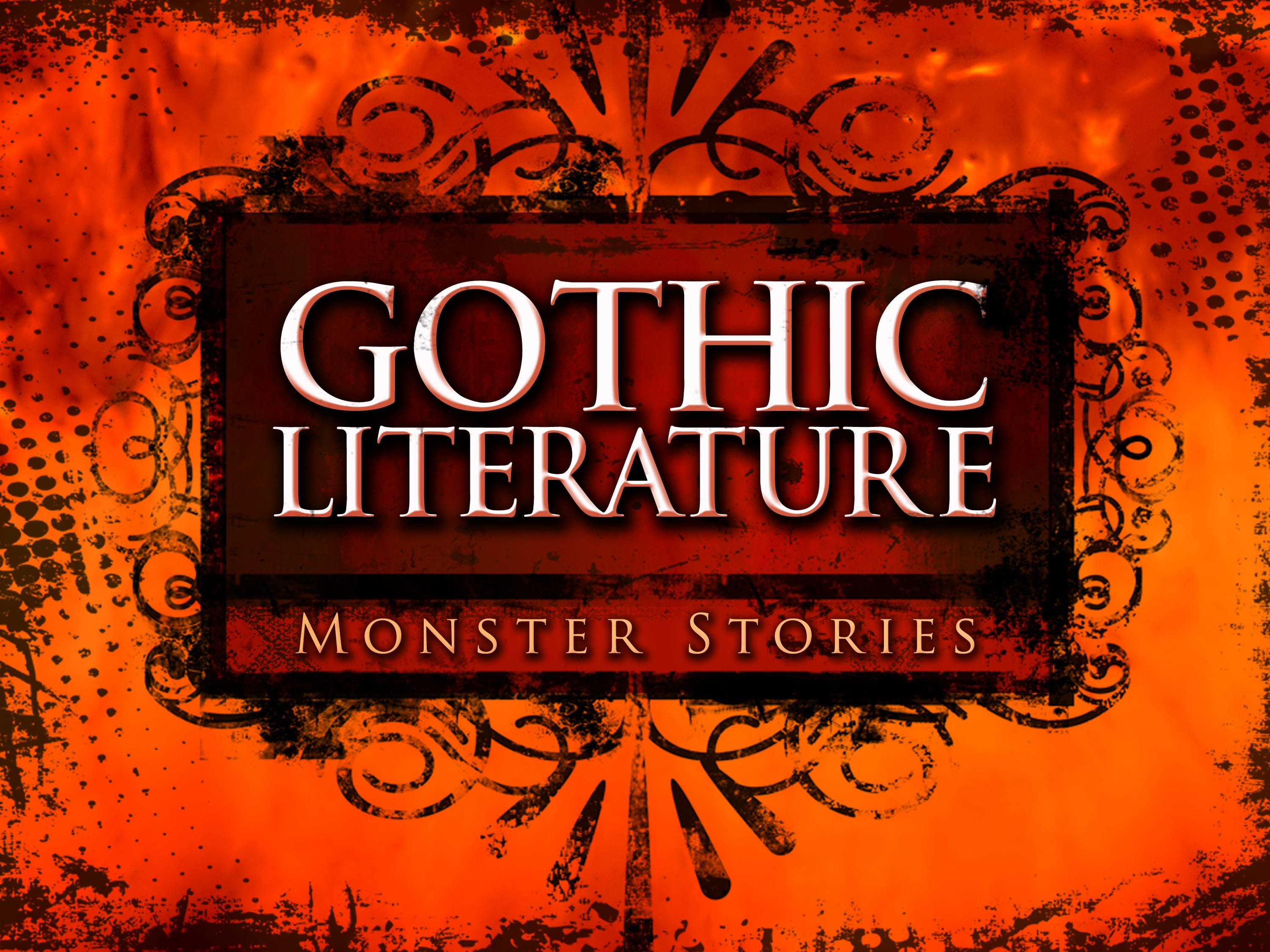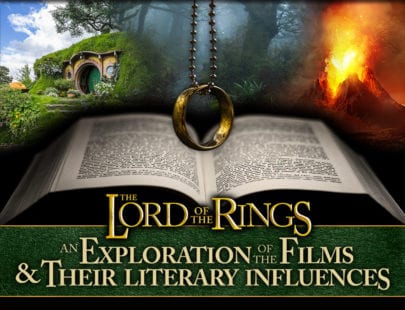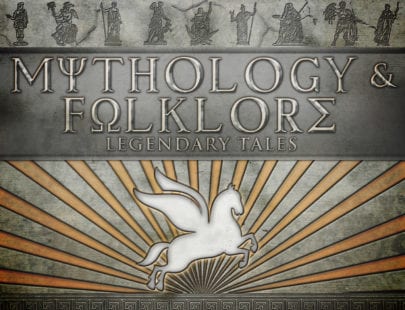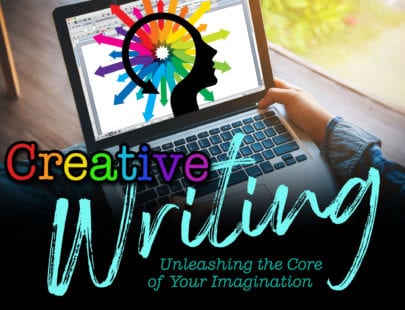
Gothic Literature
It was a dark and stormy night, and the vampires, ghouls, and undead were on the prowl… Gothic Literature is riddled with the spooky, but did you know that this genre is so much more than a scary form of entertainment? In Gothic Literature, you’ll learn about how some of the world’s greatest authors from the 19th century through today used Gothic elements to tackle issues that needed serious attention: the class system, gender norms, racism, social injustice, and more! Grab your monster gear and explore why Gothic literature has retained its appeal even with today’s audiences.
Units at a Glance
Unit 1: Gothica: When Gruesome is Delicious
In this unit, we’ll explore the classic elements of Gothic literature, from the terror it induces in its characters and readers to the literary devices its writers use to create a sense of the macabre. To fully appreciate the Gothic genre, it’s important to understand its place in history and society, which then led writers to adopt this particularly gruesome style of storytelling. It’s also critical that readers master the vocabulary of Gothic writing and learn to recognize common themes in this genre. Finally, we’ll analyze two examples of Gothic literature through our examination of a poem and a short story that were written in the Gothic style.
What will you learn in this unit?
- Recognize the historical period in which Gothic literature first flourished
- Explore common elements and themes that define the Gothic style of writing
- Differentiate between horror and terror as used in Gothic literature
- Examine which literary devices Gothic writers employ to create mood
- Analyze elements of Gothic literature using a sample poem and short story
Unit 2: With Great Power Comes Great Responsibility
Gothic writers invent a host of characters in their works, most of whom struggle to engage “normally” in polite society. The typical Gothic protagonist faces their own demons while they search for peace among the living or the dead. This unit explores the madness within each human being as we examine characters who represent the best and the worst versions of humanity. You’ll read the Greek myth “Prometheus” and excerpts from Mary Shelley’s classic novel Frankenstein. You’ll also see how modern storytellers address the traits that make us human.
What will you learn in this unit?
- Differentiate between how genetic and environmental factors impact human character development
- Describe the ways in which the Greek myth “Prometheus” challenges faith-based beliefs about the creation of humans
- Explore how Gothic writer Mary Shelley examines our attraction to the superficial beauty in others
- Recognize current and competing interpretations of the story of Frankenstein’s monster
Unit 3: To Thine Own Self Be True
In this unit, we explore the “duality of man,” a common Gothic theme. Specifically, we’ll look at how Robert Louis Stevenson’s novella, The Strange Case of Dr. Jekyll and Mr. Hyde (hereinafter referred to as Dr. Jekyll and Mr. Hyde), examines the conflict between good and evil that lies within each of us. In addition, we’ll consider more current works that address this theme, paying particular attention to how storytellers use setting to intensify the impact of their work.
What will you learn in this unit?
- Determine how the Christian church’s teaching during the Victorian Age created unattainable standards for members of society
- Assess how writers expanded on traditional Gothic settings to increase the sense of terror their readers experience
- Analyze human beings’ internal conflict between good and evil, or man’s dual nature
- Discuss how Sigmund Freud’s theories on human behavior provide a foundation for modern storytellers of terror
Unit 4: Gothic Themes and Bram Stoker’s Dracula
In this unit, we’ll study how Gothic writer Bram Stoker explored themes related to female stereotypes during the Victorian Era. Specifically, we’ll look at his vampiric novel, Dracula, and how it challenges readers to see the natural inconsistencies between traditional and modern gender roles. Through the study of Dracula, we will also examine life as a reflection of art as well as the conflict between religion and science.
What will you learn in this unit?
- Discuss how Gothic writers influenced attitudes about gender roles and gender stereotypes
- Examine the ways in which Bram Stoker’s Dracula creates a clash between traditional and modern values
- Identify examples in modern vampiric literature of the conflict between religion and science
- Explore the popularity of the vampire genre in the twentieth and twenty-first centuries
Unit 5: Gothic Short Stories
In this unit, we explore the Gothic short story, both those written during the Victorian era and those written in the United States during the nineteenth and twentieth centuries. Specifically, we will examine the differences between Gothic short stories and novels, and the differences between English and American Gothic stories. We will also examine several examples of popular Gothic short stories as well as brief biographies of their authors, including the famous American writer Edgar Allan Poe.
What will you learn in this unit?
- Explain how Gothic short stories differ from Gothic novels and novellas
- Identify events from Edgar Allan Poe’s life that influenced his short stories
- Analyze “The Tell-Tale Heart” and Poe’s exploration of personal guilt
- Differentiate between American Southern Gothic literature and traditional Victorian era Gothic literature
Unit 6: Gothic Poetry: Love from Beyond the Grave
In this unit, we will explore the world of Gothic poetry and the ways in which it resembles Gothic novels and short stories, as well as the ways in which it differs. In particular, we’ll study the recurring theme of unrequited love and love affairs with the dearly departed. You’ll be introduced to the poetry of Gothic writers you are familiar with, like Edgar Allan Poe and Emily Dickinson, but we’ll add poems to your library by pioneers in this genre, like Gottfried Bürger and Christina Rossetti.
What will you learn in this unit?
- Develop critical reading skills used to analyze Gothic poetry
- Recognize the roots of Gothic poetry in Gottfried Bürger’s “Lenore” and Samuel Taylor Coleridge’s “The Rime of the Ancient Mariner”
- Examine the poetry of Robert Browning and Christina Rossetti as they relate to other forms of Victorian Gothic literature
- Explore the works of American Gothic poets Edgar Allan Poe and Emily Dickinson
Unit 7: A New Identity for the Gothic Genre
In this unit, you’ll look at how Gothic literature has evolved since it was first popularized during the Victorian Era, and more importantly, we’ll revisit how modern Gothic writers use traditional Gothic themes to challenge social justice issues. Specifically, you’ll study twentieth-century Gothic novels by Black women writers, mystery and detective stories that apply Gothic elements, and psychological thrillers, both in novels and film. Through this study of more recent stories, you’ll increase your appreciation for the appeal of the Gothic genre to modern audiences.
What will you learn in this unit?
- Explain how Gothic writers use their stories to challenge social justice issues related to discrimination and class conflict
- Analyze the works of African American women writers who use the Gothic genre to explore racial injustice in society
- Apply the Gothic style of writing to mystery and detective stories
- Connect the Gothic genre to novels and films that are categorized as psychological thrillers
Unit 8: A New Era of Gothic Fiction
In this unit, we look at the appeal of Gothic themes in the twenty-first century. Specifically, we delve into how Gothic writers have widened their influence, both in the audiences they attract and the social issues they explore. To this end, we meet apocalyptic zombies as well as a new breed of vampires, and we consider how these creatures force us to reexamine society’s ever-present conflict between the “haves” and the “have nots.”
What will you learn in this unit?
- Identify elements of Gothic works that occur through the past two centuries
- Compare and contrast nineteenth and twenty-first century vampires in Gothic literature
- Analyze the way in which racism is depicted in twenty-first century Gothic fiction
- Examine the use of zombies and apocalyptic settings as symbols of societal distress
Required Materials
Physical
- Video recording device
- Items found around your home
Software
- Word processing software
- Presentation software
Other
- Bram Stoker’s Dracula (there are several versions online of this classic Gothic novel or visit your local library)
- Lyrics to a favorite song
Optional
- Mary Shelley’s Frankenstein (optional)


